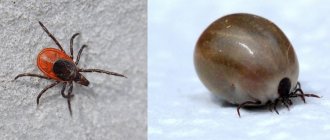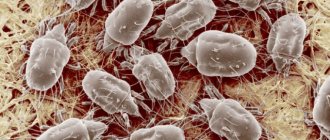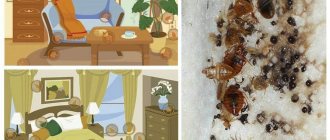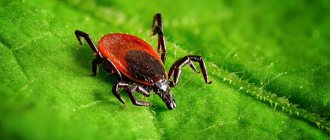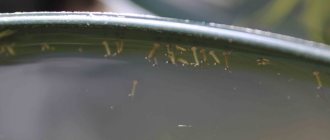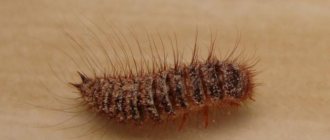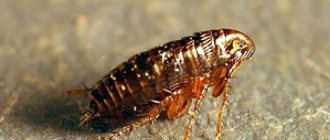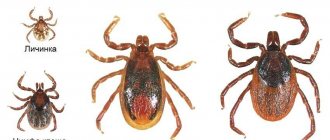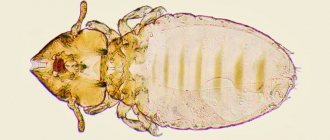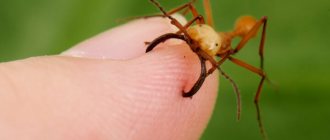Ticks appeared on Earth many tens of millions of years ago, contemporaries of giant reptiles, and have changed little since then. With a high degree of probability, even then in the Akari subclass there were species that fed on dinosaur blood. This may be an indirect confirmation of the warm-blooded nature of lizards. The continents at that time were still a single whole, which allowed the ancestors of modern ticks to spread throughout the planet. In the process of evolution, on separate continents, new species of ticks arose from the original ones, forming a phylogenetic tree. Therefore, the question of where ticks came from in Russia is illegitimate. They existed in this territory long before the appearance of states and even Homo sapiens. But people are of little concern about the legality of ticks on Russian territory, since the main concern of humanity today is the fight against diseases transmitted by these arthropods. So, elucidating the origin of ticks that transmit encephalitis is much more relevant than their evolutionary history.
What are ticks
The tick is a blood-sucking parasite that poses a danger to humans and animals. Their saliva may contain pathogens of dangerous diseases: encephalitis, fever, Lyme disease. Borreliosis is not typical for the territory of Russia.
It mainly affects residents of Western Europe and North America. The first case of the disease in Russia was recorded in 1991. It is caused not by a virus, but by spirochete bacteria. The size of an adult tick reaches 0.5 mm. He doesn't have wings. Mature ticks have 4 pairs of legs, babies have 3. Arthropods lack a visual organ, but their sense of smell is very well developed. They are able to smell the scent of prey at a distance of 10 meters.
Based on their body structure, they are distinguished between leathery and armored representatives. In the first, the head and chest are fused, in the second, the head is movable. Leatherbacks breathe over the entire surface of the body; in armored animals, oxygen saturation occurs through the spiracles.
Ticks are not very mobile. Over the entire period of their life, they can overcome no more than 10 meters.
They wait for the victim on blades of grass near roads. Special devices - claws and suction cups - help to grasp more firmly. Arthropods use hooks to get onto the body of the host. Reference. There is an opinion that ticks can jump.
In fact, they cling to the victim and crawl up it. They often dig into the head and neck area. Their presence becomes noticeable only after a bite. It seems that the parasites fell on the person or animal from above. Ticks do not live on trees. They cannot catch a prey there because they move poorly and cannot jump or fly. An adult drinks human blood 2-3 times during its life. Young ticks prefer rodents, lizards, and birds as a food source. Females drink a volume of blood much larger than themselves. They can suck blood for 6 days. Male ticks are less aggressive. Their goal is to find a female and mate with her.
Arthropod saliva has several functions. The first portion is spat out when the tick tries to grab onto the victim. It hardens in the air, forming a “cement secretion”. The second portion is viscous, containing many nutritional components. Some biological substances contain analgesics, others destroy blood vessels and tissues, and others kill the immune system.
What harm do they do to humans?
Ticks have been found at home in literally every part of the world where humans live. In bed they find food in the form of dandruff and skin flakes. This way they receive the necessary nutrition, and sweat provides the level of humidity required for reproduction. Such conditions help them survive in a wide variety of climates. They only cannot tolerate severe frosts or scorching sun rays.
Over the course of a week, about 1 g of dead skin particles fall from the human body into bed linen. This diet is enough for thousands of parasites. Naturally, after feeding, they defecate. And special protein compounds in their feces begin to act as allergens for humans. As a result, when this substance accumulates, people simply get sick. Those rashes and raised redness on human skin are not the site of a bite, but a banal irritation, a reaction to an allergen released by arthropods in the course of their life.
In particularly advanced cases, a person, especially if he is predisposed to allergies, may develop serious symptoms of the condition, including anaphylaxis.
Among the main manifestations of an allergic reaction observed in people:
- Rhinitis;
- Dermatitis;
- Irritation;
- Asthmatic manifestations.
This condition most affects those who are genetically predisposed to such immune reactions. But with a large accumulation of fecal matter, bed mites in dust can give such symptoms in a completely healthy person who has not previously suffered from allergies. Essentially, a person inhales dust along with fecal matter, which has a size of 10-40 microns. Once on the mucous membrane, they begin to dissolve and provoke corresponding symptoms in the form of a severe allergic reaction.
The maximum acceptable level for humans from a safety point of view is 100 individuals per 1 g of dust. But the reality is that in this volume of the carrier there are often up to 50 thousand parasites at the same time.
Where do ticks come from?
The ancestors of ticks are giant reptiles. Representatives of the Akari subclass fed on the blood of dinosaurs. Over time, the ancestors of ticks spread everywhere, and new species of arthropods formed.
Ticks prefer forests with deciduous vegetation, live in ravines, river valleys, meadows, and love areas littered with windbreaks. The population size reaches its maximum in May and remains so until the second half of June. Some ticks thrive in cool weather, so they can be found in September. In unfavorable climatic conditions, individuals die out due to depletion of nutritional reserves. The next season the numbers are restored.
Also useful to read: Tick Season
Some types of ticks have adapted so well that they even live in permafrost. Arthropods are known to parasitize penguins.
Treatment of eyelash mites with folk remedies
Traditional medicine recommends alcohol tinctures of chamomile, calendula, and tansy for the treatment of eyelash mites, which have an anti-inflammatory effect. They lubricate the eyelids and eyelashes at the base. Lubricate with a cotton swab very carefully so that alcohol does not get into your eyes. To wash the eyes and eyelashes, tea leaves and tansy decoction are also used. But all these manipulations are only of a preventive and auxiliary nature, and without full-fledged complex treatment, they are not effective.
That's basically all you need to know and not forget about eyelash mites and their treatment. But if you carefully and correctly monitor your body’s condition, taking the necessary personal hygiene measures, then this knowledge will remain only additional information for reflection.
The end of April - the beginning of July is not only a time of beautiful flowering of nature, the beginning of the summer season and long-awaited vacations, but also a dangerous period for human health. It is during these months that the number of ticks increases many times over. At the same time, the risk of contracting tick-borne encephalitis also increases. So where did ticks come from? We will try to explain this to you.
There are several thousand species of these arachnids. For humans, the threat is mainly posed by the Ixodes tick, the same carrier of diseases. One of the features of this “beast” is its incredibly light weight, due to which it is able to move around the victim’s body almost imperceptibly.
Forest ticks love moisture and moderate shade. They can be found in large numbers in mixed and deciduous forests with abundant grass and dense undergrowth. Forest paths and ravines overgrown with grass, forest edges, willow thickets in the forest - all these picturesque natural places can be fraught with a hidden threat. Despite the scientifically proven facts that ticks live in these areas, the myth that ticks fall from trees still dominates the minds of citizens. The fact is that, acting according to their natural mechanisms, ticks tend to move upward, trying to land on a bare area of the body. They are attracted to the smell of a person or other warm-blooded animal. Ticks, due to the structure of their body, cannot feed on anything other than blood. Therefore, they would not physically have the strength to climb to the top of the trees!
Many legends can be heard about the origin of the tick. The popular question is “where did forest ticks come from?” finds many interesting answers, among which you can even hear a fascinating story about how ticks were brought to Siberia by the Japanese.
In fact, ticks have always existed. These creatures arose in the same distant eras as the first forests and animals of our planet. Humanity has always suffered from their bites, it’s just that several centuries ago medicine did not reach such a level as to quickly diagnose infection with encephalitis: the patient’s body was instantly paralyzed, and the cause of death was indicated as a disease known at that time.
Large-scale baiting of forest ticks is dangerous for the natural balance
It is much less labor-intensive to follow basic safety rules and timely vaccination. In the city park area, work must be carried out to thin out bushes, clear the area of fallen branches and leaves, and control measures on the number of stray dogs
Where did ticks come from in Russia?
Until the 30s of the 20th century, there were no ticks carrying encephalitis on the territory of Russia. Over time, the situation has changed. Adherents of conspiracy theories claim that the tick arrived in the Soviet Union thanks to the Japanese.
The first outbreaks of an unknown disease were recorded in the Far East. The virus spread among the Red Army soldiers who fought in those places. An expedition was sent to the scene of the incident. It turned out that the causative agent of the infection was the Ixodid taiga tick.
In the northeastern part of China there was a secret laboratory in which biological weapons were being developed. After the invasion of Soviet troops, activities were curtailed, but we managed to learn something. Viruses were studied within the walls of the laboratory. The carriers were rodents, insects, and mosquitoes. The Japanese knew about encephalitis, although mosquitoes were its carriers. Tick-borne encephalitis is another strain of the virus. The leader of the expedition was arrested. The information was classified.
Critics of the theory argue that ticks have always lived in the taiga, and that local peoples fear them.
Interesting! Indigenous people are resistant to encephalitis. Of all those bitten by arthropods, only 30% became ill. The Japanese probably used rodents as carriers.
Before the revolution, cases of infection were recorded in the Far East, but due to the similarity of symptoms, the disease was perceived as influenza . People suffering from encephalitis were not of interest to the state. Most of them were exiles.
Some modern scientists are of the opinion that the tick moved from west to east. Other researchers consider Siberia a breeding ground for encephalitis ticks. Today, the process of tick reproduction is uncontrollable; arthropods are spreading to new territories.
Choosing a bite site
When choosing a bite site, ticks are guided by many factors. Since human skin is heterogeneous and different areas differ in temperature, degree of humidity, saturation with blood vessels, softness or roughness, acid-base balance, the tick faces a difficult task - to find exactly the place that is best suited for effective feeding.
But if for some reason it was not possible to get there, they also do not disdain lower-quality areas, such as the chest, stomach, buttocks or even legs.
- on the ears of an animal,
- on the head
- on the paws between the toes,
- in the groin area,
- near the anal area.
That is, in those places where the tick is least likely to be harmed during the animal’s self-cleaning.
Where do ticks live: types and distribution
Representatives of the arachnid class are the oldest group of arthropods. They feel great in almost any environment: they climb into nests, burrows, and settle in plants.
The diet is based on plant debris, small arthropods, and soil fungi. Some species have become parasites. The most famous representative of the group is the ixodid tick. They transmit infection to humans.
On the territory of Russia there are 2 species of arthropods: taiga and European. Taiga ticks live in the Far East, Siberia, the Urals, and in the central European part. Ticks pose the greatest danger at the end of May-June. The European (aka canine) representative inhabits the North-West region. Ticks are most active from May to September.
The largest number of cases of infection were recorded in Siberia, Udmurtia, the Republic of Mari El, Khakassia, and Transbaikalia. Ticks are active in the Kurgan, Kemerovo, and Sverdlovsk regions.
Characteristics of bed mites
Common bed mites are very small creatures, their size ranges from 0.1 to 0.23 mm. They are almost invisible to the human eye. In most cases, such uninvited guests are detected only when using magnifying devices. Thus, not all people who share shelter with these creatures know what bed mites look like. Modern photography has made it possible for everyone to view them. The lifespan of linen mites does not exceed 2.5 months. During this time, the female parasite manages to lay more than 30 eggs.
These creatures cannot bite humans, so traces of their attacks cannot be detected on the skin. When they talk about a bed tick bite, a photo of which some people provide, most likely in this case we are talking about an invasion of bedbugs, which are also extremely small in size. These creatures also live in human habitations, but they can drink blood. A person who has been bitten may mistakenly attribute the resulting wounds to a tick. Linen mites feed mainly on keratinized particles of the skin, which remain in excess on the bed linen. The highest concentration of such parasites is detected by microscopic examination:
- feather pillows;
- blankets made from natural materials;
- mattresses;
- carpets;
- home shoes and clothing.
These insects feel most comfortable in beds and bedding, since this is where the elevated temperature and humidity remain for most of the day. Mites are found in pillows made from natural down in almost 100% of cases. This is not surprising, since such material is an ideal breeding ground for parasites. Ticks in bed begin to increase their population when favorable conditions are created for this.
Among other things, a huge number of these parasites can live in ordinary household dust. Here they can find enough food. In addition to human habitations, high concentrations of linen mites are usually observed in the seats of public transport, laundries and even hairdressers. Thus, if such unpleasant neighbors are found in a residential area, it is simply impossible to determine exactly how they appeared.
Where do ticks live: favorite habitats
An important criterion for tick life is high air humidity. He prefers to live in soil, thick grass, and household garbage. Interestingly, parasites avoid swampy soil and flooded areas.
Reference. The food source for arthropods is animals. Humans are not the main target for hunting. Ticks prefer small animals, cattle, and domestic animals.
Favorable conditions for living are forest edges, clearings where ferns, moss grow, deciduous forests with abundant vegetation, banks of rivers, ponds, and streams.
Ticks inhabit coniferous forests and prefer brushwood debris over vegetation.
Temperature plays an important role in the life of arthropods. The optimal temperature for activity is +5 degrees and above.
In favorable conditions, ticks multiply and their appetite increases. When the atmospheric temperature drops below 5 degrees below zero, the vital activity of ticks stops. They fall into a daze.
To avoid an unpleasant encounter with a tick, you should avoid areas with tall grass. Parasites love to lurk near roads and paths where people walk. A pine forest with dry air is a place where they cannot be found. The meadow tick is not so aggressive, and it is difficult to get infected from it.
A favorable place for arthropod hunting is tall grass. This is where they attack victims. To minimize the likelihood of contact with ticks in the garden, just mow the grass.
It is also useful to read: Prevention of tick bites
Ways to fight
Man has been fighting domestic bed mites for a long time. There are certain methods that can give good results, but do not completely rid the room of the parasite:
- Taking your mattress and heavy blankets to the dry cleaner at least once a season;
- Ironing slightly damp items on both sides;
- Carry out wet cleaning daily;
- Wash bedding once a week;
- Give preference not to heavy pile carpets, but to wicker, homespun carpets;
- Remove upholstered furniture;
- Refuse drapery on the windows and choose blinds;
- Keep air humidity less than 40%;
- Ventilate the room regularly;
- Bedding should ideally be replaced with padding polyester or other artificial materials;
- Wash and comb your pets regularly.
Since the pest is especially fond of dust, it is necessary to carry out a general cleaning to remove all places where dust accumulates, animal hair, and so on. This impact helps reduce the population and deprive them of their favorite habitats. To make tidied areas unattractive for new occupancy, it is necessary to carry out wet cleaning using ammonia: for 1 liter of water, use ¼ cup of liquid soap and ½ cup of ammonia. First you need to combine soap and water, and then add alcohol. The solution can also be used when washing bed linen and clothes.
It is important to understand that treating bed linen is not enough on its own. In fact, these parasites have a way of clinging to clothing, furniture, soft toys and surviving there until they again find themselves in familiar and favorable conditions. Therefore, it is necessary to thoroughly treat all surfaces in the contaminated room, as well as in neighboring rooms, including hard-to-reach areas on cabinets, under sofas, and so on.
Are there ticks in the city?
When ticks are active, they move to big cities. The more green the better. Parks, recreation areas, squares, lawns are places where arthropods can hide. It is unknown how ticks get into the city, because parasites cannot fly. Every year, green recreation areas are treated with a chemical composition. However, ticks manage to survive and reappear year after year.
Important! The danger of infection occurs only if the parasite manages to inject a certain amount of saliva. If he sucks, then the likelihood of developing encephalitis is minimal. In megacities, where high-rise buildings predominate, encephalitis ticks are difficult to find.
The threat awaits in areas of abundantly planted vegetation, where residential areas come into contact with forests, cottages, and cattle fields. Small towns with one-story buildings and dense green spaces are targeted. In rural areas, ticks may live in grass near pedestrian areas. In rural areas, services do not combat ticks. Order is maintained if the population exceeds half a million people. About 90% of victims brought the tick from the suburbs or rural areas.
How ticks move and land on humans
Arthropods tend to cling to the skin, hair on the legs and head. The exception is parasites that spread the virus through contact with infected areas of the skin. They can remain hungry (that is, without blood) for up to 3 months.
The least dangerous to humans are ear, spider, water, predatory, and barn parasites. The route of exposure to humans differs depending on what species the ticks belong to.
Scientists distinguish several groups of mites (not all of the existing ones are represented):
- ixodidae;
- argasaceae;
- armored;
- gamasaceae;
- scabies;
- pasture;
- linen;
- brown.
Ixodids initially live on animals or in grass, then move to humans. Argasidae live on the walls of houses, cling to the body of chickens, then move on to humans. Oribatid mites are carriers of worms. They reach humans with food.
Gamasid arthropods rarely parasitize humans, only with a sharp increase in population size. The scabies parasite is transmitted through personal hygiene items.
The pasture tick transmits encephalitis, plague, fever, and brucellosis. It reaches humans through domestic animals and plants. Linen mites provoke asthma and allergies, but do not bite. They live in pastel linen, furniture, dusty corners. Brown ticks migrate to humans from grass and animals.
The circulation of the virus in a natural outbreak is as follows. The tick at the larval stage chooses mice, shrews, chipmunks, and birds as victims. In the nymph stage, squirrels, hedgehogs, and hares are added to the diet. Adults have a much wider diet. It includes squirrels, hedgehogs, birds, dogs, cows, moose and, ultimately, humans.
Useful tips
Tip #1
Ticks often enter an apartment or house with pets. In order to prevent the appearance of parasites, carefully examine your pet after each walk, parting the fur with your hands.
Tip #2
Do not be afraid of arthropods that live on the leaves and stems of indoor plants. Spider mites live only on indoor and garden plants and feed on their cell sap. These arthropods cause the death of plants, but do not pose any danger to people and domestic animals.
Tip #3
Pay special attention to any bites. The encephalitis tick is no different in appearance from a normal one, so it is impossible to visually identify a dangerous arthropod. This can only be done in laboratory conditions.
Who eats ticks in nature?
Sucking parasites are the lowest link in the food chain , so they have many natural enemies. These are birds, insects, and even some plants. The reproduction rate is so high that the population size increases every year.
Birds
Ixodid arthropods, the most dangerous species for humans, live mainly in the taiga. They suck blood from birds and animals, and sometimes people. Sometimes they themselves become victims.
Not all birds eat ticks, but only some species:
- thrush;
- chicken;
- quail;
- black grouse;
- guinea fowl;
- tick weaver;
- starling;
- sparrow;
- drag.
Within the city limits, sparrows actively fight ticks. During the breeding season of parasites, birds arrange a feast for themselves. Birds eat parasites during the daytime. What is most attractive is not the tick itself, but the blood that fills its belly.
Reference. Scientists believe that hungry arthropods are of little interest to birds as food.
Insects
The worst enemy of ticks in the forest is forest red ants. Arthropods avoid areas where the smell of formic acid is present. Ants are stronger, they always win a fight. As soon as a tick appears in the ant territory, the inhabitants of the colony gather and quickly destroy the parasite.
Although ticks avoid the proximity of ants, it is not always possible to escape from insects. Ants can smell the scent of prey from several meters away. They pounce on the tick, inject poison and carry the victim to their lair. Arthropods are almost the main source of food for them. Females feed ticks to their young.
In addition to ants, ticks are also eaten by other types of insects: dragonflies, bedbugs, ground beetles, and ichneumon wasps. Spiders also love to feast on bloodsucking animals.
Amphibians
The tick runs the risk of being eaten in forests, not on the banks of rivers and reservoirs - wherever amphibians live. Frogs, toads, lizards, newts, salamanders, and chameleons consider ticks as a food source.
Plants
In addition to representatives of the world of insects, arachnids, and amphibians, the natural enemies of ticks are plants. Plants do not literally eat blood-sucking parasites. They rather repel arthropods.
Tansy and chamomile behave aggressively towards ticks. Plants produce a nerve agent. Once within the dangerous perimeter, the tick runs the risk of dying. Arthropods try not to approach dangerous plants at a distance of several kilometers.
Types of bell-bottoms
Scabies
The disease completely spreads throughout the pet's body within six months. Without timely assistance, the pet begins to die of tissues and limbs, which entails inevitable death. The reasons for the appearance of ticks are simple: disgusting living conditions, feeding and lack of care on the part of the owner.
Apply Aversictin ointment with caution. Avoid contact with eyes and plumage
Available but less effective drugs include:
Feather
Sprays used for treatment include Arpalit, Celandine-spray, Insectol, and Frontline. The repellent is sprayed on the bird from a distance of 15-20 cm, avoiding contact with the eyes, wax and beak. The procedure should be carried out quickly, no more than two seconds, to prevent possible intoxication. If necessary, re-treatment is carried out after 10 days.
In the initial stages, folk methods help get rid of ticks:
The procedure is carried out 3-4 times, once every five days.
Tracheal
Some of it is removed along with the droppings. The cause of the disease is contact with an infected bird, feeding offspring by a sick parent, feeding each other during the courtship period, infection through drinking bowls and feeders.
The parrot refuses to eat, sneezes and coughs. The first signs of the disease are changes in voice intonation or loss of voice. As the affected area grows, the bird experiences constant coughing, sneezing, wheezing and whistling in the sternum. Over time, breathing becomes difficult, the parrot is forced to breathe through its mouth, often swallowing mucus.
Wounds and inflammatory processes appear on internal organs. Possible loss of feathers on the head.
The pet refuses food, suffers from shortness of breath, and periodically loses consciousness. After paralysis and suffocation, death occurs.
The danger is that sometimes the development of the disease is asymptomatic.
The diagnosis is made in the clinic, after laboratory tests of droppings and tracheal washings.
For treatment use:
Additionally, a course of taking expectorants is carried out to remove dead mites.
Syringophilosis
Colonies spread along the flight and tail feathers,
gradually destroying the structure and causing inflammation of the skin. As it spreads, it causes feathers to fall out. The incubation period lasts three months.
In addition to constant itching, the parrot experiences dejection and anxiety, refuses to consume food, gradually loses weight and quickly becomes exhausted. The pet's appearance deteriorates, feathers lose their shine and color, and unhealthy spots appear.
Symptoms of infection by the tick mite are similar to those of the downy tick. The main difference is the presence of black stripes at the base of the damaged feather.
The diagnosis is made by comparing the feathers of a healthy and diseased budgie.
For treatment, Frontline, Otodectin 0.1% aerosols or Ivermectin analogues 0.1% - 0.12% are used. Moisten the withers by spreading the feathers, trying not to get on the eyes and wax. Reuse after 21 days.
Why are ticks and their bites dangerous?
Ticks stick to the victim for a long time and can live on the body for 3-4 days. They increase in size, swell, and then fall off. Ticks suck blood from various animals, including those infected with infections. Microbes contained in the blood enter the victim's body.
Carefully! The forest tick carries encephalitis, a serious disease of the central nervous system.
Parasites can carry more than 30 types of diseases. The less time a tick spends on the body, the lower the likelihood of infection. An infected person does not always get sick. It depends on the state of the immune system.
It is also useful to read: Consequences of an encephalitis tick bite in humans
Safety and protection measures against ticks
An effective measure is vaccination. It is important to get vaccinated several months before the start of the season.
Preventive measures include wearing clothing that covers as much skin as possible and hats. Shoes should fit tightly to your feet, and your wrists should also be covered. It is recommended to choose clothes in light colors, without patterns. Plain material allows you to see ticks on clothing.
Before going into the forest, you can use insect repellents. The packaging should state that the repellent is suitable for tick control.
Ticks that enter a house from the street can live up to 9 months , but they can only reproduce under certain conditions. Parasite eggs grow in the midst of plants. If there is no dense vegetation at home, offspring will not hatch. Parasites also cannot reproduce and live on pets. The home is not a typical habitat for ticks. However, after a walk you should carefully examine yourself and your children for the presence of parasites.
Anti-tick immunoglobulin is a life-saving remedy against infection. It allows you to produce antibodies in the shortest possible time.
Protection measures
The main prevention is vaccination against encephalitis. It will not save you from tick suction, but will reduce the likelihood of developing serious complications. In the warm season - the period of greatest activity of ectoparasites occurs in May and June - and when the temperature drops in early autumn, ticks are especially active. During these periods you need to be doubly careful.
Choose the right clothes
It should be as covered as possible: trousers, shirts and sweaters with a high collar to protect the neck. Pants should be tucked into socks and sweaters should be tucked into trousers. The fabric should be dense and light-colored - this way the tick will not penetrate the fabric, and you will have a better chance of noticing an arthropod crawling on your clothes in time.
There is even a special anti-encephalitis suit, which is equipped with drawstrings and reliably protects against ticks. If you regularly visit the forest, then spare no expense and be sure to get this equipment.
Use chemical protection
Popular brands are already on everyone’s lips, let’s not repeat ourselves. Let's give a little theory.
Repellents are needed to repel parasites. While acaricides paralyze and kill ticks, therefore they are considered more reliable protection. There are also combination products that combine the properties of both categories.
Repellents can be applied to both clothing and skin, but acaricides can only be applied to clothing. Protective agents should be applied to clothing in ring strips. Pay special attention to the sleeves, collar area, waist, ankles, knees and hips. It is important to remember that the protective layer will have to be renewed from time to time (the frequency depends on the type of drug).
Regular inspection
While walking, you need to examine yourself at least once every quarter of an hour. And after getting out of the potentially dangerous zone, you need to take off your outer clothing and shake it well. Look and feel yourself, paying special attention to exposed areas of your body.
There are not many protective measures, but they are simple, and their strict adherence significantly reduces the risk of infection. Well, in case they didn’t help and the tick was still able to attach itself, keep the Tick Card . With its help you can easily remove the parasite.
